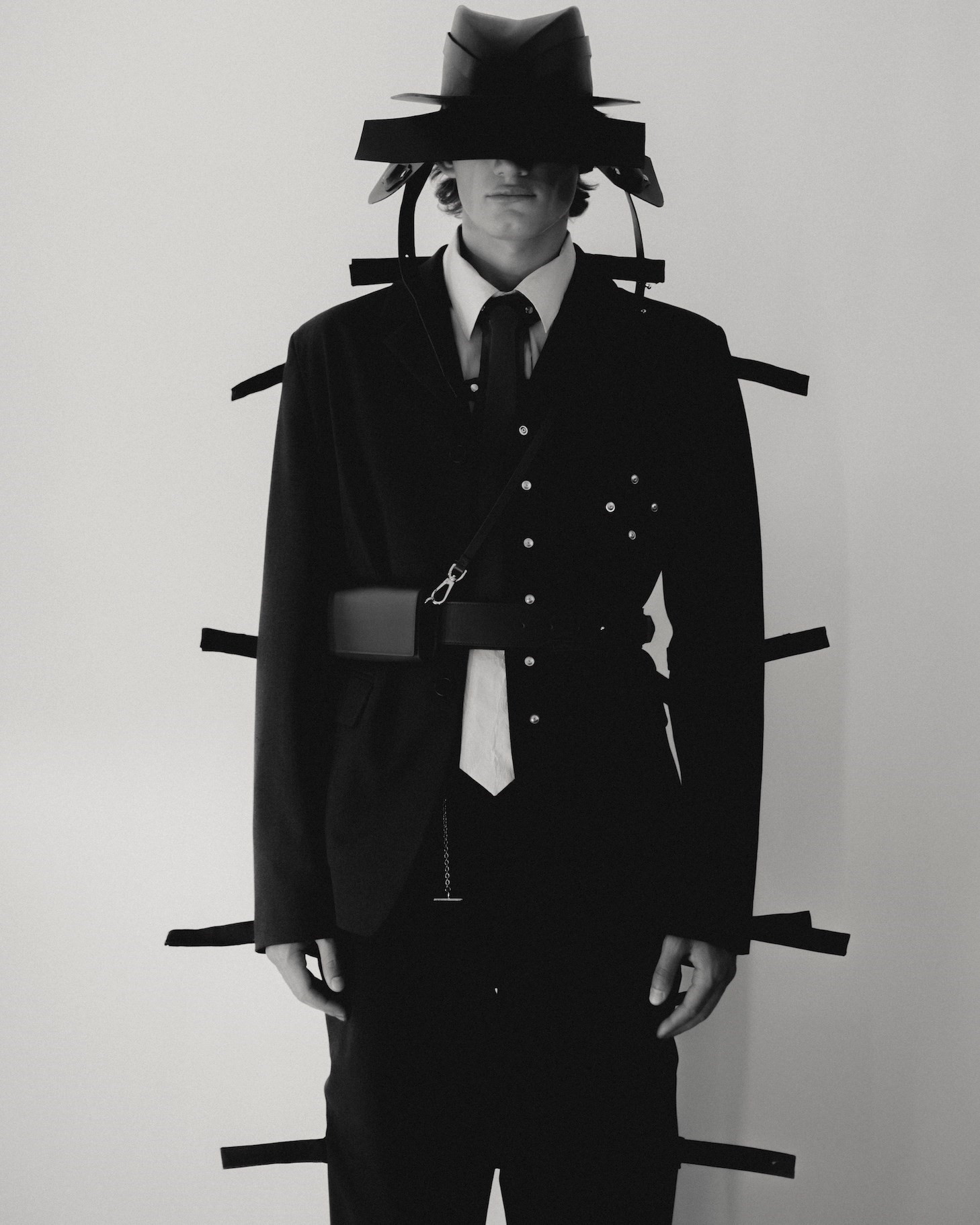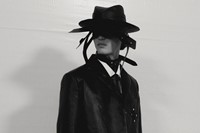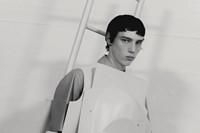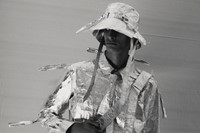Like many other great creative minds, Craig Green is a sucker for contradictions. Intrigued by the liminal spaces between chaos and control, isolation and community, and freedom and restriction, Green’s tough, avant-garde sculptural pieces are offset by the softer, puffier quilted jackets and blankets that have made him one of the most acclaimed menswear designers not just in London – where he hails from – but in the world.
His Spring/Summer 2023 show, held at Musée de l’Homme [Museum of Man] in Paris last weekend was, as usual, about contradictions. A characteristically colourful collection that drew on things as varied as myth, neoclassical pottery, and World War II dust covers, the show’s message was one of self-improvement – or, as Green puts it, it was about the gap between who you are and who you grow up to become.
In today’s rabid cultural landscape of wellness and self-help – which favours the less-is-more approach of Marie Kondo decluttering, or coma-like sensory-deprivation tanks – Green settled on a more old-fashioned, dowdy notion of betterment: decoration. “When you decorate something, it’s almost like you’re trying to make something better than it is,” he says. Cue his army of “useful” men, who walked the runway with moulded leather horse saddles and motorbike seats strapped to their front, and ladders protruding skyward from their backs. Ascension to some kind of higher plain seemed to be the subtext here, even if the male models appeared burdened, weighed down by their goodwill.
With a transcendent finale score by Frédéric Sanchez, Green felt as if he had brought a slice of summer indoors in the “airless” museum venue, which had been plastered with taut, white industrial material. “It felt like summer, but like the end of summer,” he says. “It felt perfect.”
Here, in his own words, Green tells the story of creating his S/S23 collection:
“The collection started with an image of the most decorated man; the man with the most war medals and awards. I thought there was something interesting about that, like the term ‘a decorated man’. When you decorate something, it’s almost like you’re trying to make something better than it is. It started from that idea, and then when we found the venue, The Museum of Man [Musée de l'Homme], which helped to start to inform the collection as well.
“The first part of the collection was almost like we were trying to make a man that was useful, or more useful than a normal guy. We moulded leather saddles or motorbike seats – they also had stirrups and the backs of them resembled ladders – so you could use them to ride, or go somewhere, or use them to climb to get to where you want to be. A lot of the accessories were inspired by World War II dust covers that people would wear on their watches to protect them, so we developed a lot of different accessories that could be worn on the neck or worn over a tie, that were almost like dust covers to protect. We thought the neck ones were interesting because it looked like they were protecting your voice or keeping you sanitised in some kind of strange way; in a dark way, in a nice way. Initially, we started moulding objects to create a flask or a suitcase, but we thought they were more interesting when you couldn’t get inside of them. So they were a bit like useless objects, like a drink you can’t drink and work you can’t do.
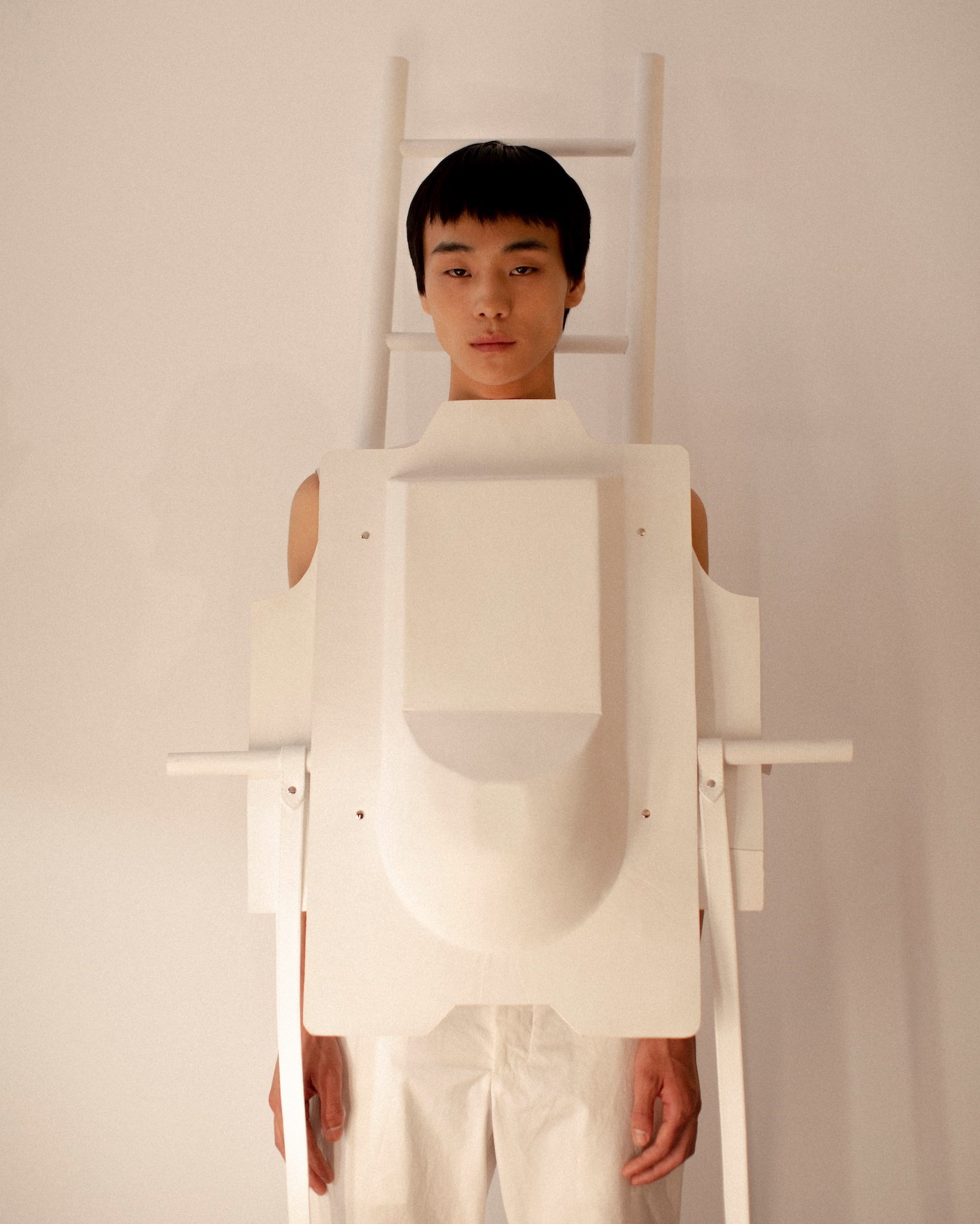
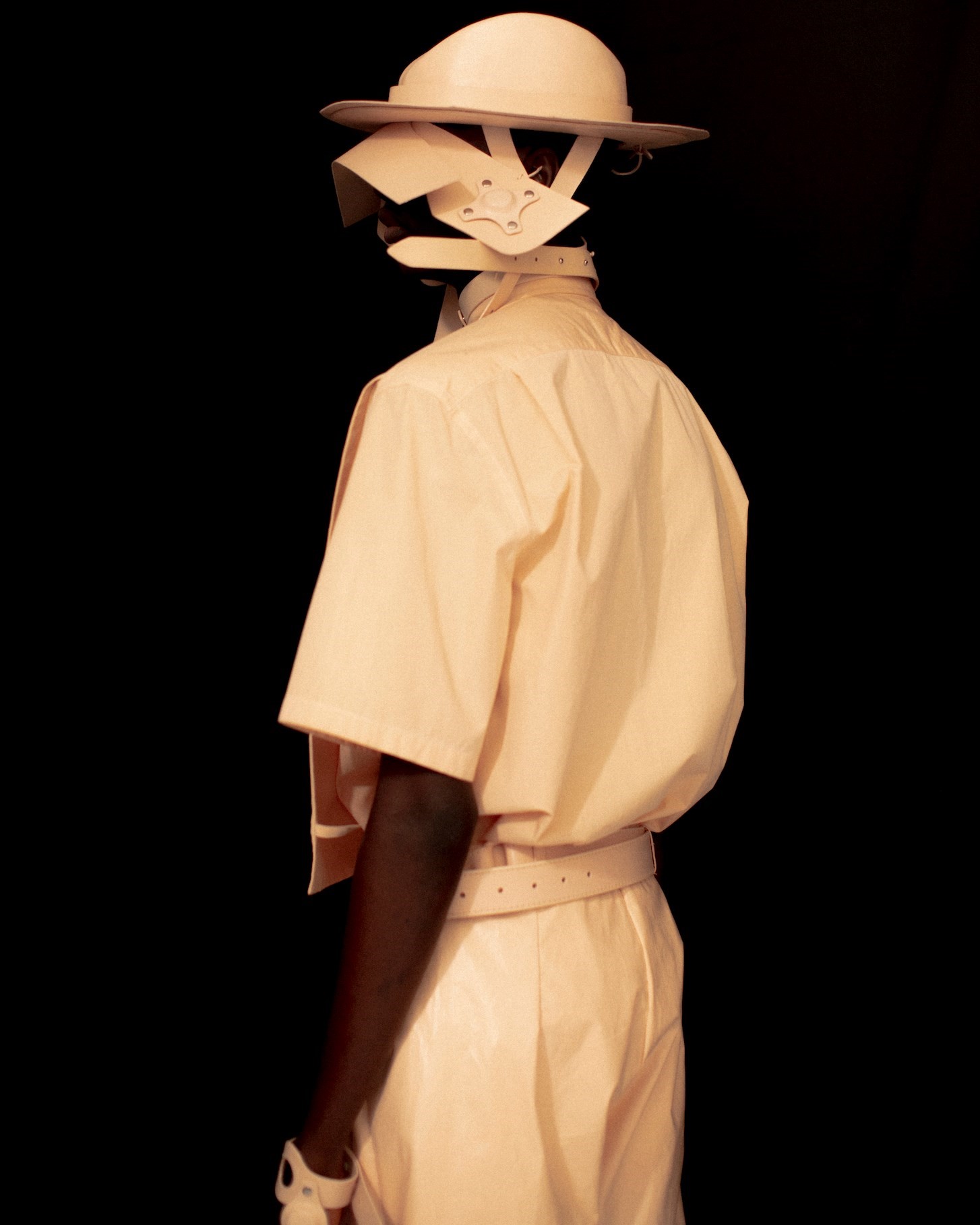
“You always have ideas of the man you’re going to be, or the person you’re going to grow up to become. It’s like an idea of aspiration. One day you’re going to grow up and one day you’re going to be this kind of person. But I wonder if that ever stops throughout your life. You constantly have the desire for progress, or to make yourself better. That also links to the finale pieces, which were inspired by neoclassical pottery and Wedgwood. Those ideas of mythical storytelling that were on the pottery, it made me think of that idea of a myth, and why myths exist. They’re lessons in a way, or teachings, or something to encourage progress. I guess that idea of progress and growing into something felt right this season.
“You want people to feel something, even if they don’t like it. I think it’s important to have a strong emotion about something” – Craig Green
“The show space was important. We’ve never really shown in a museum before. It’s an anthropological museum, but they speak about it like a laboratory examining ideas of masculinity and ‘man’. We wanted to create a very sterile-looking show space inside that venue, so the material we used for the set is an industrial material used in the building trade. We used tarpaulin in the collection, which is a material that I think has a beauty to it because it can be used as a shelter, and it’s also used in the building trade as well, and it’s a very protective, long-lasting material. With the show venue, we wanted to do something that felt very clean and sterile.
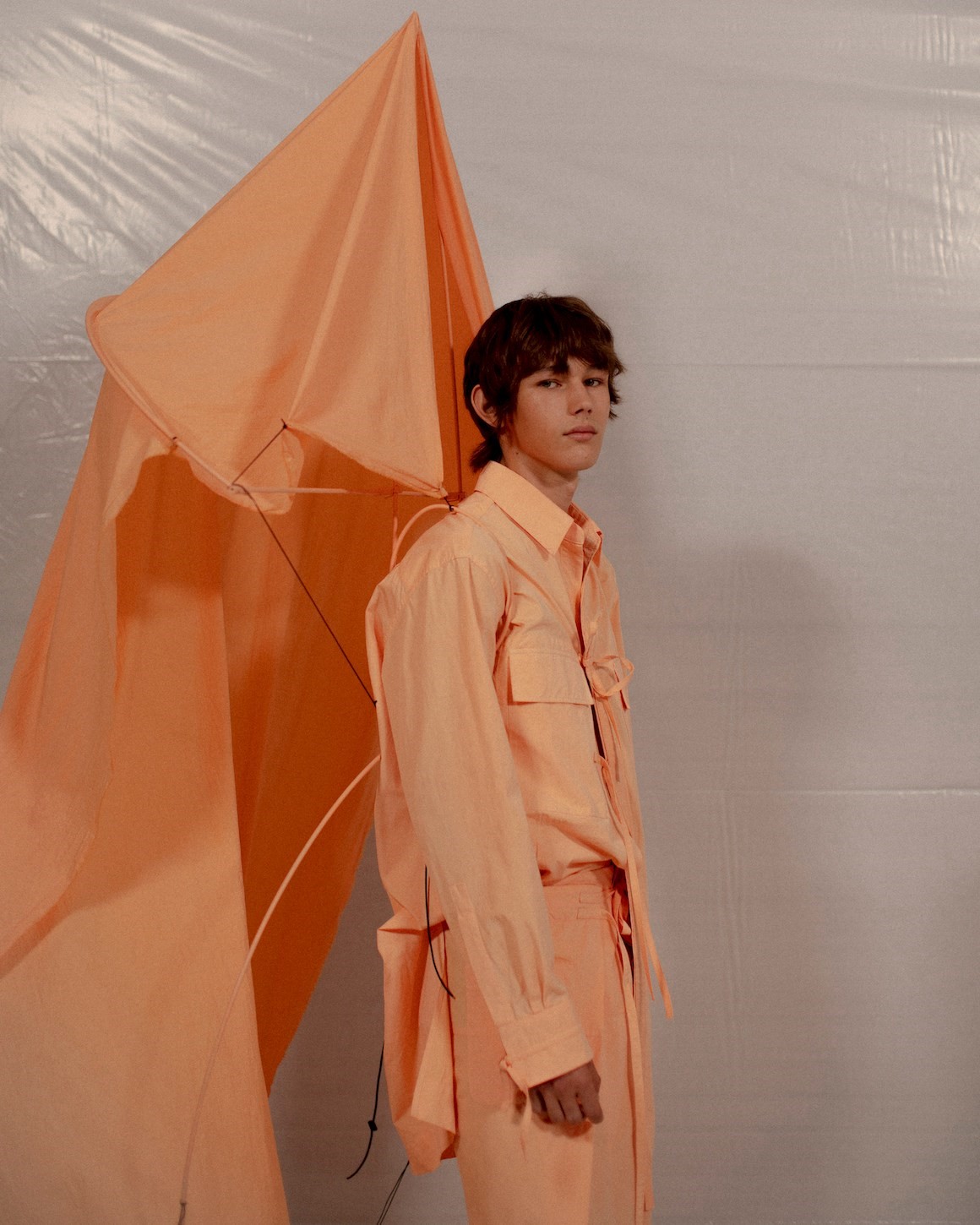
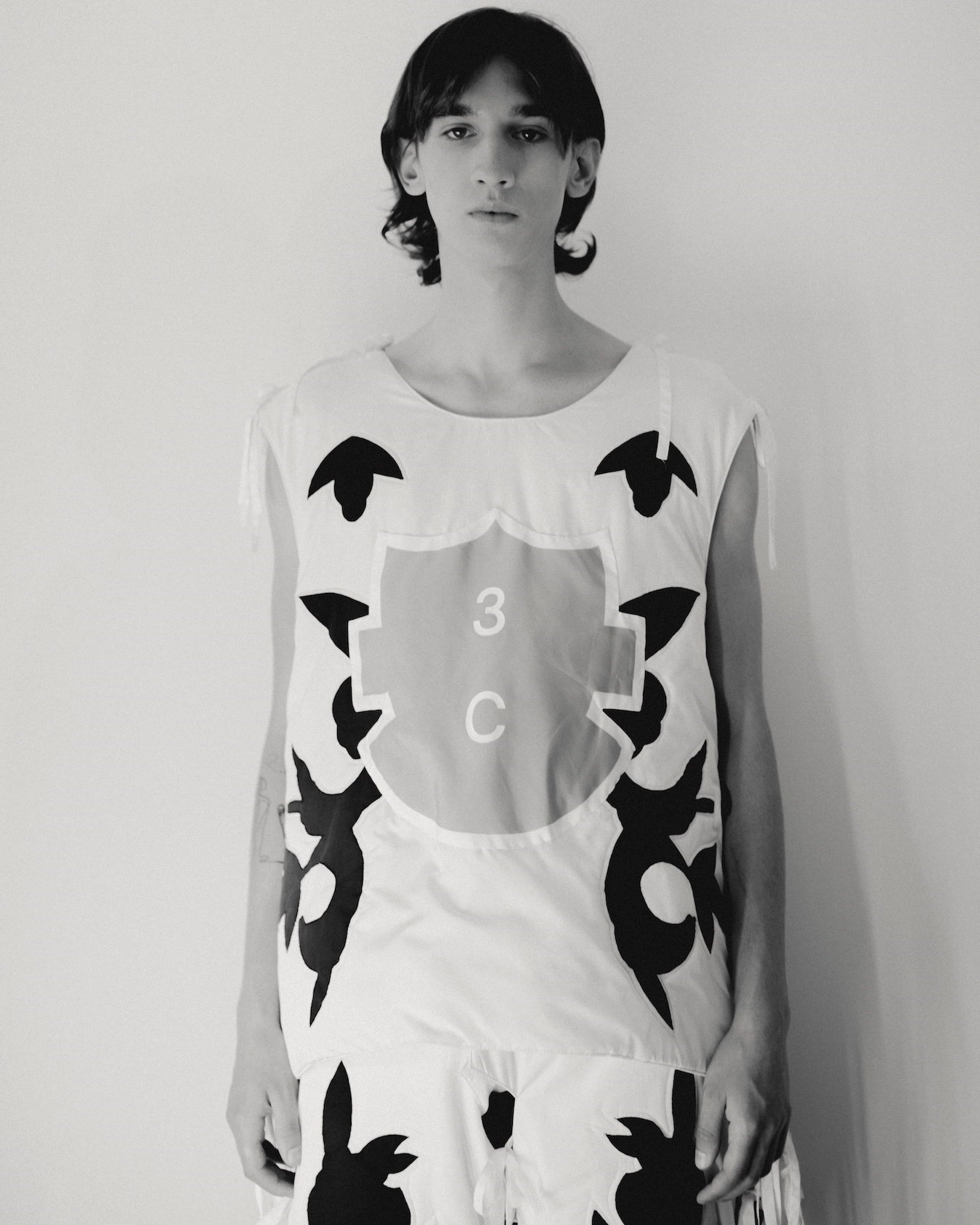
“We always work with Frédéric Sanchez on the music, and one of the important tracks was the finale. Instantly when we heard it, there was something about it that felt emotional. When I heard it, I remember saying that it felt like summer, but like the end of summer. It felt perfect. Sometimes a museum venue can feel so airless; it’s such a controlled environment, there’s no windows that open, and I thought there was something nice about that feeling of summer indoors, in somewhere so controlled. To have freedom in a controlled space was one of the themes we were talking about a lot.
“I always think things feel right when, depending on who you are or how your mind works, you can see [the clothes] in [either] a dark way or quite an innocent way” – Craig Green
“[Sculpture and clothing] have to coexist within the collection because the sculpture is only interesting when it interacts with people, when it’s on the body. On its own, maybe it’s not as exciting to see. The clothing isn’t the same without the sculptural element, it feels like it’s missing something. The sculptures help to tell the story. They all relate to each other. Obviously the sculptures are less wearable, depending on who you are of course, but it’s always very important that they coexist within a show format.
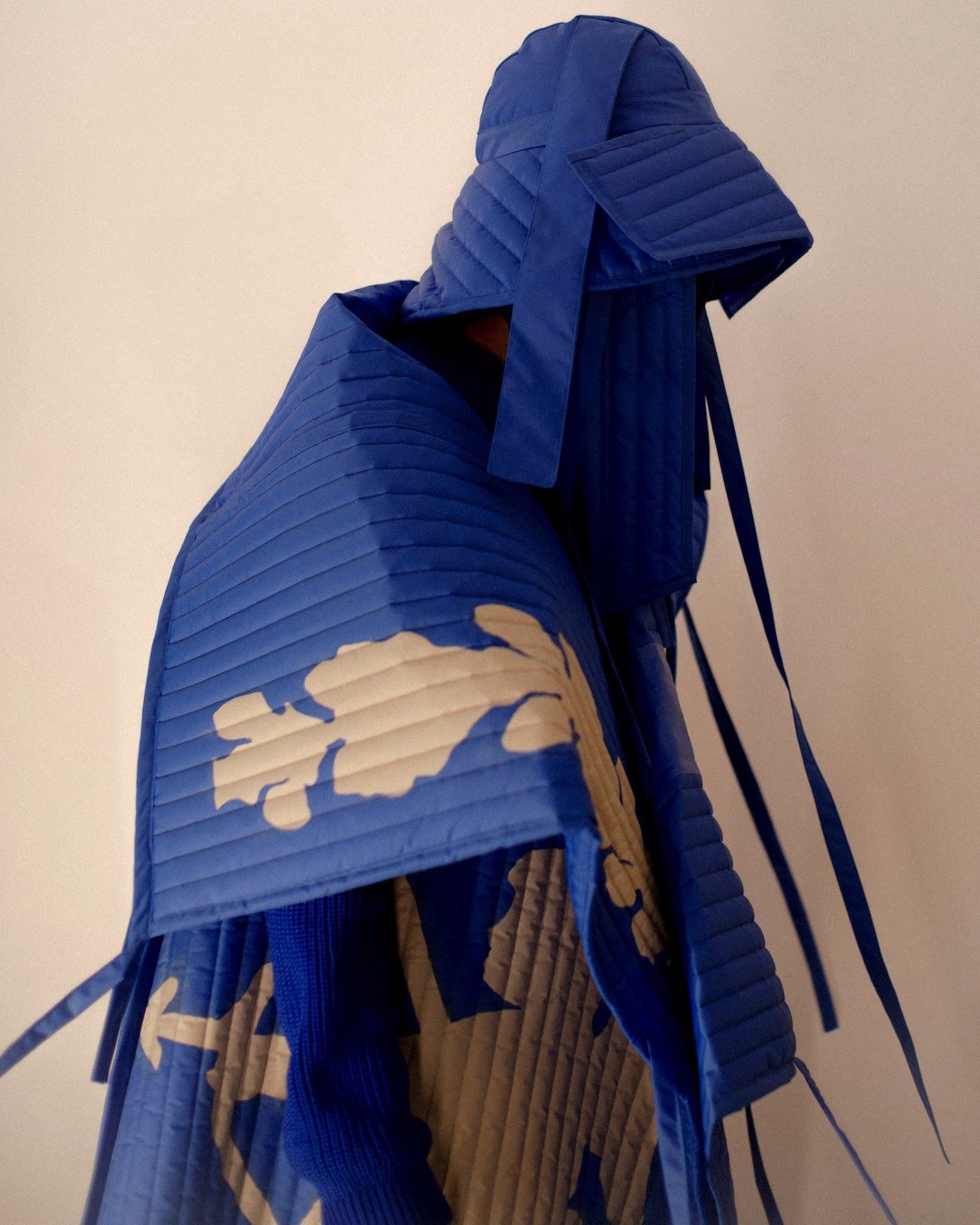
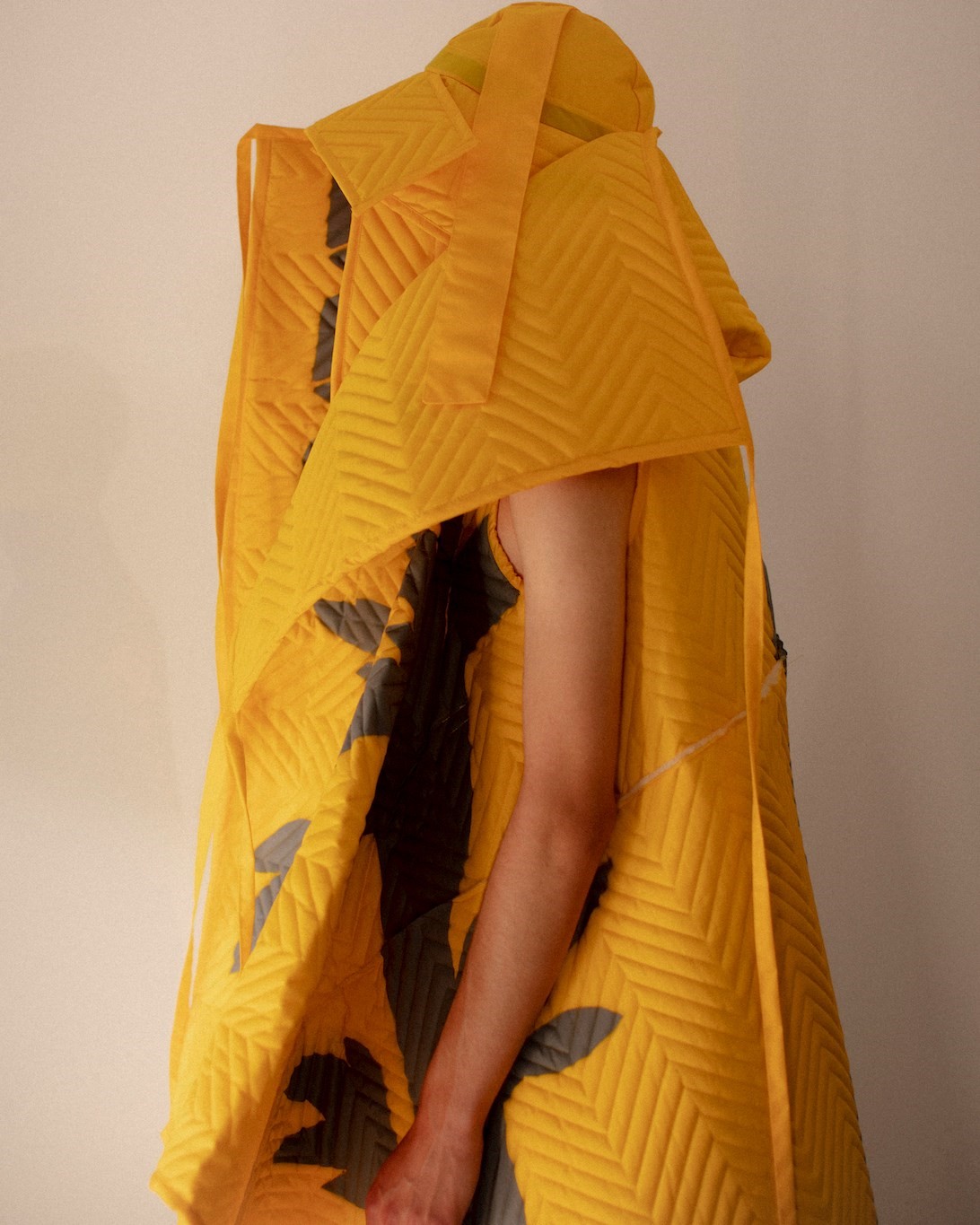
“I always think things feel right when, depending on who you are or how your mind works, you can see [the clothes] in [either] a dark way or quite an innocent way. It makes me think of the first Moncler collaboration that we did seven years ago, where we had a puffer jacket man with straps all over his body, and some people would see it and say, ‘Oh, it’s like a space man,’ and then other people would see it and say it looked like anal beads. But it depended on the character. It depended on their associations.
“With a show, you’re inviting people to travel and come into a space and experience something, so that idea of putting on a show in some way is really important. You want people to feel something, even if they don’t like it. I think it’s important to have a strong emotion about something. Either you love it or you hate it, and it’s okay to hate something. It’s better than having no feeling at all.
“What I love about fashion is that it’s a team activity. You can’t really do it alone. You need a team and you need to work with people and you need to be around people, and I love that feeling of community in the studio, in the team and also in creating a fashion show.”
